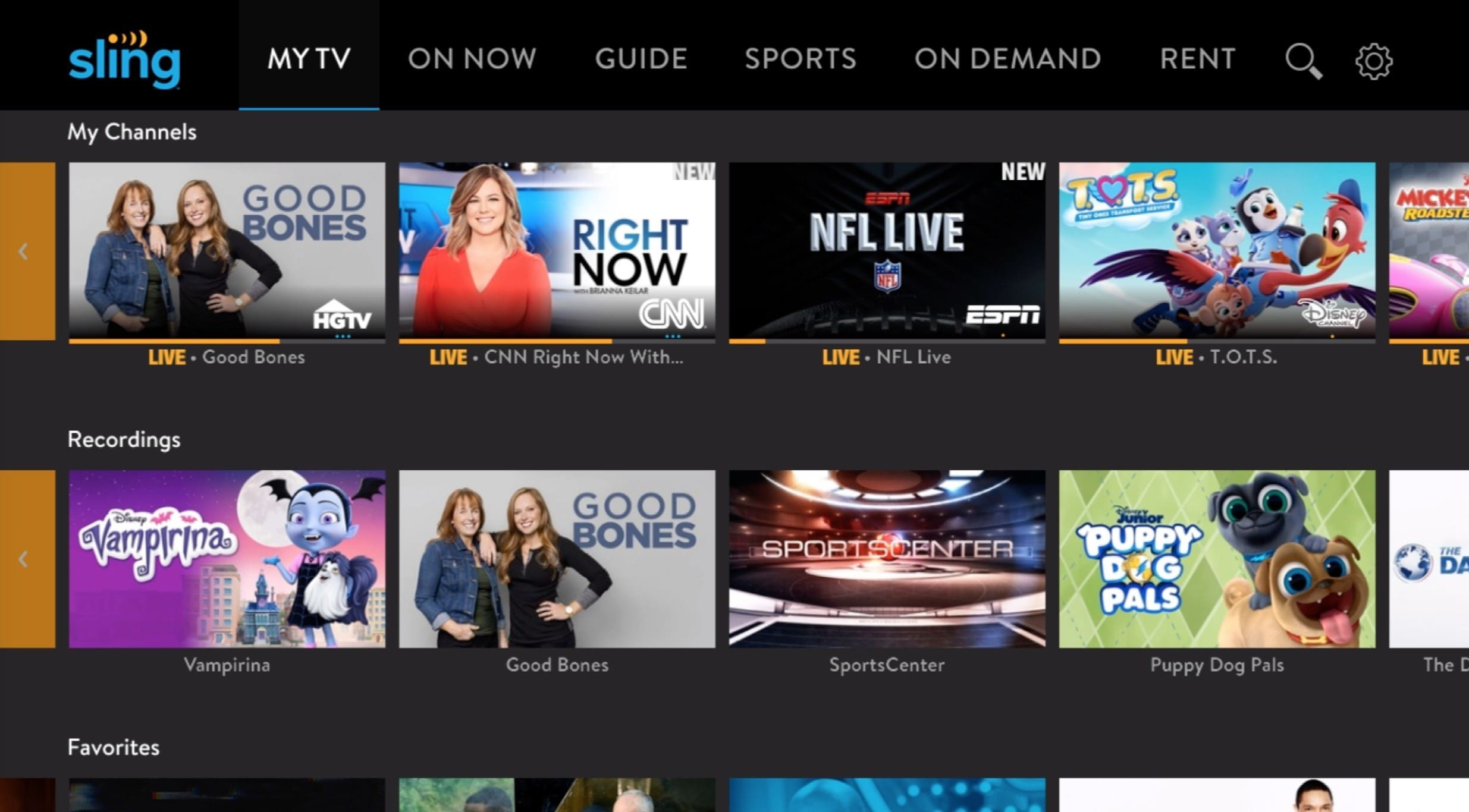Home>Technology>Home Entertainment Systems>What Is Television News?


Home Entertainment Systems
What Is Television News?
Modified: January 9, 2024
Discover the latest in home entertainment systems with our comprehensive guide to television news. Stay informed and entertained with the best in home entertainment technology.
(Many of the links in this article redirect to a specific reviewed product. Your purchase of these products through affiliate links helps to generate commission for Storables.com, at no extra cost. Learn more)
Introduction
Television news is a powerful medium that has significantly shaped the way we consume information and understand the world around us. As a vital component of the media landscape, television news plays a crucial role in informing, educating, and engaging audiences on local, national, and global events. In this article, we will delve into the history, impact, and future of television news, exploring its evolution and influence on society.
Television news has become a staple in households worldwide, delivering breaking news, in-depth analysis, and diverse perspectives on a wide range of topics, including politics, economics, culture, and technology. With its ability to reach millions of viewers in real time, television news has the potential to shape public opinion, drive conversations, and hold the powerful accountable. Understanding the evolution, characteristics, and challenges of television news is essential for comprehending its significance in the contemporary media landscape.
Join us on a journey through the dynamic world of television news as we unravel its historical roots, societal impact, and the ongoing transformations that continue to shape its future.
Key Takeaways:
- Television news has evolved from black-and-white broadcasts to digital streaming, shaping public opinion and fostering global connections.
- Challenges like sensationalism and misinformation impact television news, but embracing innovation and ethical reporting will shape its future.
History of Television News
The history of television news is a compelling narrative that reflects the evolution of media and communication technologies. The concept of televised news first emerged in the early 20th century, but it was not until the mid-20th century that it gained widespread popularity and influence. The advent of television news revolutionized the dissemination of information, bringing visual storytelling and real-time reporting into people’s living rooms.
In the United States, the first regularly scheduled television news program, “Camel News Caravan,” premiered in 1948, hosted by the esteemed journalist John Cameron Swayze. This groundbreaking program marked the beginning of a new era in journalism, as it provided viewers with a visual and auditory experience of current events, complementing the traditional print media.
Throughout the decades that followed, television news underwent significant transformations, adapting to technological advancements and societal changes. The introduction of color television in the 1960s further enhanced the visual appeal of news broadcasts, captivating audiences with vibrant imagery and enhancing the storytelling capabilities of journalists.
The 24-hour news cycle emerged in the 1980s, with the launch of Cable News Network (CNN), revolutionizing the way news was delivered and consumed. This shift towards continuous news coverage enabled audiences to stay informed around the clock, ushering in a new era of immediacy and accessibility.
With the dawn of the internet age, television news expanded its reach beyond the confines of traditional broadcasting. Online streaming, digital platforms, and social media integration have redefined the landscape of television news, allowing for greater interactivity, audience engagement, and real-time feedback.
Today, television news continues to evolve in response to the digital revolution, embracing multimedia storytelling, interactive graphics, and on-demand content delivery. The integration of mobile technologies has further extended the reach of television news, enabling viewers to access information anytime, anywhere.
The history of television news is a testament to the enduring power of visual storytelling and the ever-changing nature of media. From its humble beginnings to its current multimedia landscape, television news remains a vital conduit for informing, inspiring, and connecting audiences across the globe.
Role of Television News in Society
Television news serves as a cornerstone of modern society, playing a multifaceted role in shaping public discourse, fostering civic engagement, and providing a window into the world’s events. Its impact extends beyond mere information delivery, influencing public opinion, policy decisions, and societal awareness. Understanding the pivotal role of television news in society is essential for appreciating its profound influence on individuals and communities.
First and foremost, television news serves as a primary source of information, offering viewers access to current events, investigative reports, and expert analysis. By presenting a diverse array of topics, ranging from politics and economics to culture and science, television news enriches public knowledge and fosters informed citizenship. Through in-depth reporting and comprehensive coverage, television news empowers individuals to make educated decisions and participate in democratic processes.
Furthermore, television news acts as a catalyst for public discourse, providing a platform for dialogue, debate, and the exchange of ideas. By highlighting issues of local, national, and global significance, television news stimulates conversations that are crucial for a vibrant and informed society. It amplifies voices, sheds light on marginalized perspectives, and fosters empathy and understanding among diverse communities.
Television news also serves as a watchdog, holding institutions and public figures accountable for their actions and decisions. Investigative journalism, exposés, and in-depth reports uncover injustices, corruption, and societal challenges, prompting action and reform. By exposing wrongdoing and advocating for transparency, television news contributes to the maintenance of ethical standards and the preservation of democratic values.
Moreover, television news has the power to shape public opinion and influence public policy. Through compelling storytelling, impactful visuals, and expert commentary, television news can sway public sentiment on critical issues, mobilize support for social causes, and spur collective action. Its ability to frame narratives and evoke emotional responses underscores its role as a driver of social change and awareness.
Lastly, television news serves as a global connector, bridging geographical, cultural, and linguistic divides. By broadcasting international news, human interest stories, and cross-cultural exchanges, television news fosters a sense of interconnectedness and global citizenship. It promotes empathy, solidarity, and a shared understanding of the world’s complexities.
In essence, television news is not just a purveyor of information; it is a catalyst for informed citizenship, public discourse, and societal progress. Its role as an educator, advocate, and unifier underscores its enduring significance in the fabric of modern society.
Television news is a form of media that provides current events, information, and analysis to viewers. It is important to critically evaluate the sources and perspectives presented in television news to ensure a well-rounded understanding of the topics being covered.
Characteristics of Television News
Television news possesses distinct characteristics that set it apart as a dynamic and influential form of media. From its visual storytelling capabilities to its real-time reporting, the following traits define the essence of television news and contribute to its enduring impact on audiences worldwide.
- Visual Impact: One of the defining characteristics of television news is its visual storytelling prowess. Through the use of live footage, on-the-ground reporting, and multimedia presentations, television news brings events to life, capturing the immediacy and emotion of unfolding stories. The power of visuals enhances audience engagement and fosters a deeper connection to the events being covered.
- Real-Time Reporting: Television news excels in delivering up-to-the-minute coverage of breaking news and developing stories. With live broadcasts, on-the-scene reporting, and real-time updates, television news provides audiences with immediate access to unfolding events, creating a sense of urgency and relevance.
- Diverse Storytelling Formats: From in-depth investigative reports to human interest features, television news offers a wide range of storytelling formats that cater to diverse audience interests. Whether through interviews, documentaries, or immersive visual narratives, television news leverages multiple storytelling techniques to convey information and evoke emotional resonance.
- Expert Analysis and Commentary: Television news integrates expert analysis and commentary to provide context, interpretation, and insight into complex issues. Through the contributions of seasoned journalists, subject matter experts, and commentators, television news enhances audience understanding and critical thinking, enriching the news consumption experience.
- Accessibility and Reach: Television news has a broad reach, extending into homes, public spaces, and digital platforms. Its accessibility via traditional broadcasting, cable networks, and online streaming services ensures that a diverse audience can engage with news content across multiple mediums, fostering widespread awareness and engagement.
- Emotional Impact: Television news has the capacity to evoke emotional responses and empathy through compelling storytelling and impactful visuals. By humanizing stories, amplifying voices, and shedding light on societal challenges, television news cultivates a sense of connection and empathy among viewers, fostering a deeper understanding of the human experience.
These characteristics collectively define the essence of television news, distinguishing it as a vibrant, immersive, and influential medium that continues to shape public discourse and societal awareness.
Challenges and Controversies in Television News
While television news serves as a vital source of information and public discourse, it is not immune to a myriad of challenges and controversies that impact its credibility, objectivity, and societal influence. The following are some of the prominent issues that have sparked debates and scrutiny within the realm of television news, raising questions about journalistic integrity, media ethics, and the evolving nature of news consumption.
- Sensationalism and Infotainment: One of the enduring controversies in television news is the prevalence of sensationalism and infotainment, where news content is tailored to maximize viewership and engagement rather than prioritizing factual reporting and substantive analysis. The pursuit of ratings and attention can lead to the prioritization of sensational stories over nuanced, in-depth reporting.
- Political Bias and Partisanship: Television news has faced criticism for perceived political bias and partisanship, with certain networks and programs being accused of promoting specific ideological agendas. This polarization can undermine the public’s trust in the objectivity and impartiality of news reporting, leading to a fractured media landscape and heightened societal divisions.
- Disinformation and Misinformation: The proliferation of disinformation and misinformation poses a significant challenge to television news, as false or misleading narratives can spread rapidly through visual and auditory mediums. Combatting the spread of misinformation requires rigorous fact-checking, responsible reporting, and a commitment to upholding journalistic standards in the face of online misinformation campaigns.
- Ethical Dilemmas in Coverage: Television news often grapples with ethical dilemmas in coverage, particularly when reporting on sensitive or traumatic events. Balancing the public’s right to know with the ethical considerations of privacy, dignity, and sensitivity towards affected individuals requires careful editorial judgment and a commitment to ethical reporting practices.
- Commercial Pressures and Corporate Influence: The commercialization of television news can introduce pressures related to advertising revenue, corporate interests, and audience demographics. These influences may impact editorial decision-making and content selection, potentially compromising the independence and integrity of news reporting.
- Challenges of Digital Disruption: The digital era has presented television news with challenges related to online competition, social media dynamics, and the fragmentation of audience attention. Adapting to the evolving digital landscape while maintaining journalistic standards and credibility poses a complex set of challenges for traditional television news outlets.
Addressing these challenges and controversies requires a commitment to journalistic integrity, ethical reporting practices, and a dedication to serving the public interest. By navigating these complexities with transparency, accountability, and a focus on quality journalism, television news can uphold its role as a trusted source of information and a catalyst for informed public discourse.
Future of Television News
The future of television news is poised to undergo transformative shifts driven by technological innovation, evolving audience preferences, and the dynamic nature of media consumption. As the media landscape continues to evolve, the following trends and developments are anticipated to shape the trajectory of television news in the years to come.
- Interactive and Immersive Storytelling: The future of television news is likely to embrace interactive and immersive storytelling formats, leveraging virtual reality (VR), augmented reality (AR), and interactive graphics to engage audiences in new and compelling ways. These innovations will enhance viewer participation and offer dynamic experiences that transcend traditional news delivery.
- Personalized and On-Demand Content: Television news is expected to adapt to the trend of personalized and on-demand content consumption, catering to individual viewer preferences and habits. Through tailored news experiences, customizable updates, and on-demand access, television news will strive to meet the diverse needs of modern audiences.
- Data-Driven Journalism: The future of television news will harness the power of data-driven journalism, utilizing analytics, visualizations, and data storytelling to provide in-depth insights and context to news reporting. This approach will enable audiences to engage with news content in a more analytical and informed manner.
- Cross-Platform Integration: Television news will continue to integrate seamlessly across multiple platforms, including traditional broadcasting, online streaming, social media, and mobile applications. This cross-platform integration will ensure that news content reaches diverse audiences across various digital touchpoints, fostering greater accessibility and engagement.
- Diversity and Inclusion: The future of television news will prioritize diversity and inclusion in content creation, newsroom representation, and storytelling. Embracing diverse voices, perspectives, and narratives will enrich the storytelling landscape and ensure that television news reflects the complexities and richness of global society.
- Ethical and Transparent Reporting: Upholding ethical reporting standards and transparency will be fundamental to the future of television news. As the media landscape evolves, a commitment to accountability, fact-checking, and responsible journalism will be paramount in maintaining public trust and credibility.
Furthermore, the future of television news will be shaped by the convergence of traditional broadcasting with digital innovation, fostering a hybrid media ecosystem that blends the strengths of visual storytelling with the interactivity and immediacy of digital platforms. This convergence will create new opportunities for audience engagement, community participation, and collaborative storytelling.
As television news continues to evolve, it will remain a vital conduit for informing, inspiring, and connecting global audiences. By embracing innovation, upholding journalistic integrity, and adapting to changing media landscapes, television news will navigate the future with resilience, relevance, and a commitment to serving the public interest.
Frequently Asked Questions about What Is Television News?
Was this page helpful?
At Storables.com, we guarantee accurate and reliable information. Our content, validated by Expert Board Contributors, is crafted following stringent Editorial Policies. We're committed to providing you with well-researched, expert-backed insights for all your informational needs.















0 thoughts on “What Is Television News?”